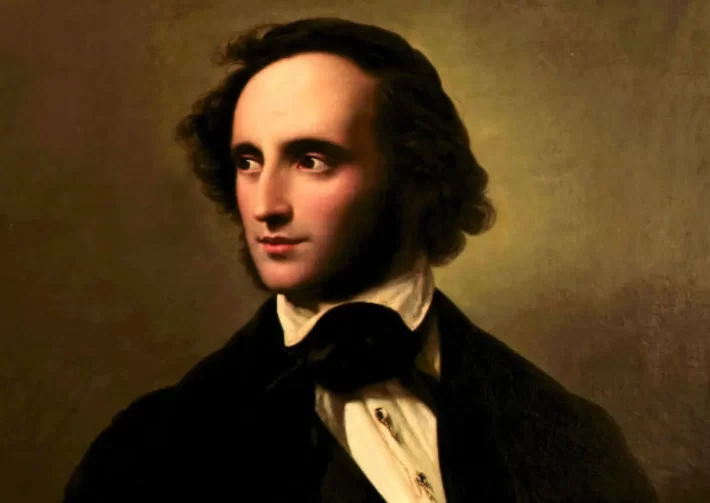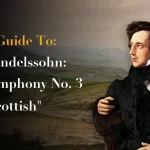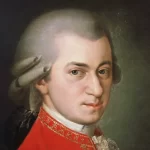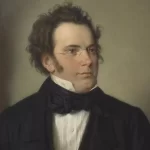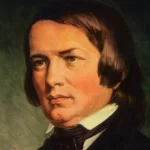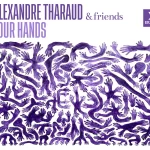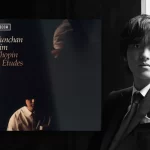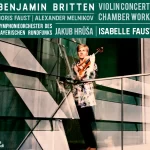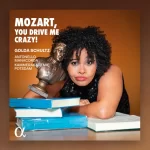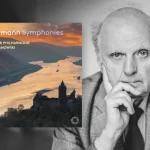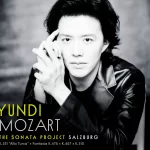Felix Mendelssohn Bartholdy (1809-1847) is one of the most beloved composers from the “Romantic Era” in classical music. The reasons for his popularity are many, but can be explained by the unmediated charm of his musical language. One of the great melodists, Mendelssohn had the rare ability to produce unforgettable tunes that make a mark on the listener, along with real compositional and orchestration talent. A child prodigy, he composed from an early age and was well equipped as a pianist and conductor, making a name for himself in both fields – As the chief conductor of the Leipzig Gewandhaus Orchestra (1835–1847) and as a sought-after performer of other composers’ as well as his own compositions.
An avid traveler, especially in his youth, Mendelssohn was extremely popular in Britain, and gave some historic performances in this country, including debut performances of works by Beethoven and others, and of course of his own orchestral and chamber works.
Other than his long-lasting contribution as a composer, Mendelssohn is also credited for reviving the works of another Leipzig giant – Johann Sebastian Bach. Through family archives, he had access to some of Bach’s greatest works, and so he was the first to perform the St. Matthew Passion in Germany well after Bach’s works went into oblivion, and continued to rediscover other Bach pieces to the European audience. As a result of these efforts, many of Mendelssohn’s own compositions are undeniably influenced by the greats of the past, especially in his usage of contrapuntal techniques and the adoption of baroque and classical era forms.
Mendelssohn wasn’t a revolutionary romantic and felt more comfortable with contemporaries such as Schumann and Chopin than with the brashness of Richard Wagner or Hector Berlioz.
Here are 10 pieces which represent a good place to start if one wants to get familiar with Mendelssohn’s music. Our recordings recommendations are also intended for the beginner listener and represent the best version listeners can get familiar with the piece.
Violin Concerto, Op. 64
Maybe The single most famous Violin Concerto in classical music history, this concerto has it all – unforgettable melodies, shining virtuosity, sophisticated orchestral accompaniment and compositional balance between all movements. One of Mendelssohn’s late pieces and his last concerto, it shows the composer at its best, and justifiably remained popular from its debut performance in 1845.
This Violin Concerto was recorded by virtually all notable violinists. If you have a favourite violinist – he or she has most likely recorded the piece – But Kyung Wha Chung version is certainly one of the more satisfying from the vast catalog. She is accompanied by the Orchestre Symphonique de Montréal with conductor Charles Dutoit, in an excellent recording from 1972.
Read our full guide to the best recordings of the Mendelssohn Violin Concerto here:
A Midsummer Night’s Dream, Op. 21/61
The opening, famous overture for the famous Shakespearean play was written when Mendelssohn was in his late teens, and it remains one of his most beloved orchestral works. 17 years later, a whole incidental music to accompany the play was commissioned by the king of Prussia, and the composer dully composed 13 more movements, some require an accompanying girls choir. One of these movements, “The Wedding March”, needs no further introduction for anyone who has attended a wedding.
Contrary to other recorded versions, which brings the “cleaned-up” music portions of Mendelssohn’s “A Midsummer Night’s Dream”, The Boston Symphony Orchestra & Seiji Ozawa bring the complete music by the composer, including the parts which presumably accompanied the actors’ speeches in the staged performance. Dame Judy Dench brings portions of the Shakespeare texts to these portions of the music, and her contribution is highly engaging. Completeness aside, the performance itself is one of the best on record.
Hebrides Overture Op. 26
Mendelssohn traveled extensively in England a few times throughout his life, and visited Scotland while he was 20. This trip made a huge impression on the young composer, and his “Hebrides Overture” and third, “Scottish” Symphony, started to form in this period, even if completed and published much later.
This overture tries to give a musical impression of the famous Fingal’s Cave in the Staffa island, into which Mendelssohn cruised in his trip. It’s a marvelous orchestral work, taking advantage of all sections of the orchestra and maintains high tension for the entire 10 minutes or so of the piece. Along with the “A Midsummer Night’s Dream’s” overture, it’s one of Mendelssohn most performed orchestral pieces, along with the 3rd and 4th Symphonies.
Christian Thielemann & Vienna Philharmonic bring all the glorious sound of this legendary orchestra and score. It also includes other fine accounts of German orchestral overtures.
Symphony No. 3 (“The Scottish”), Op. 56
Mendelssohn most famous Symphony started out as sketches in his memorable Scotland trip in 1829. However, the composer was dissatisfied with the composition and revised it numerous times until it formed into the version we know today. It was performed in its final version in 1842, in Leipzig. This, as a matter of fact, makes it the last Symphony Mendelssohn completed, and not as its official number suggests.
This Symphony draws the listener in from the first slow and moving opening, followed by a more energetic episode. This slow introduction continues to make an appearance in this movement and others (even as a faded, motivic hint, such as in the slow movement). From the first atmospheric movement, through the second more cheerful, the sublime Adagio and triumphant finale, it’s easy to understand why this is one of the most beloved Symphonies of all times.
Peter Maag legendary version of the Scottish Symphony with the London Symphony Orchestra was recorded on 1960 but sounds remarkably fresh and has not been surpassed since. It is accompanied with the more dryly recorded version of “A Midsummer Night’s Dream” from 1957 – But the album Is worth any price for the “Scottish” alone.
Symphony No. 4 (“The Italian”), Op. 90
Mendelssohn’s other famous Symphony took its name, like its “Scottish” sister, from the location in which the composer sketched out the first draft. Unlike the Scottish Symphony, it starts off extremely energetically, with wind and strings blazing. It’s a challenging piece indeed even for the best of orchestras. The composer’s baroque and classical influences and sophisticated multi-layered voice writing are heard throughout this Symphony, meticulously re-written few times up until the final version we have today.
John Eliot Gardiner offers two version of the Italian Symphony – The final version and the initial draft, performed at the London debut. It’s interesting to listen to the original thought of the composer and his compositional progression to the version we came to know today. It also includes a nice performance of the Fifth Symphony (“Reformation”), all with the legendary sound of the Vienna Philharmonic Orchestra.
Piano Concerto No. 1, Op. 25
After early written concertos for single and two pianos, came this first “mature” piano concerto, once considered a staple in the repertoire for piano and orchestra, and since goes in and out of fashion, with the help of some notable soloists. It’s a relatively cheerful but contradictory in spirit, highly virtuosic pianistically and includes a good balance between soloist and orchestra. The three movements are played without a break, which contributes to the sense of unity of the piece.
Mendelssohn’s two mature piano concertos are very often presented together (It’s worth mentioning that the second piano concerto, Op. 40, is no less enjoyable than the more famous first).
Lang Lang, the Chicago Symphony Orchestra and Daniel Barenboim makes the perfect partnership from start to finish in this concerto, and are very well recorded. In this album, the Mendelssohn concerto is accompanied by a no less impressive account of the Tchaikovsky piano concerto. If you insist on getting the two Piano Concertos together on one album, Murry Perahia’s performance is a safe bet.
Piano Trio No. 1, Op. 49
Mendelssohn’s Piano Trio No. 1 can be considered among the best ever written for this Violin-Cello-Piano ensemble, certainly in the late 19th century. The writing of the solo vs accompaniment for all the participant is ingenious, and all partners are given equal opportunity to take advantage of their perspective instrument (and boy is it difficult a piece to perform!). This 30 minutes piece includes 4 movements perfectly balancing one another, from the weightier first movement, to the “song-without-words-like second, the light-hearted scherzo and the dramatic finale.
Mendelssohn expert Benjamin Frith with Violinist Lucy Gould and cellist Richard Lester (“The Gould Trio”) give us a well-rounded, suitably romantic account of both the Mendelssohn trios.
Songs Without Words (Lieder ohne Worte)
It’s debatable who invented the title “Song Without Word”, but Mendelssohn undoubtedly made this genre a staple of the piano literature of the late 19th century. Collected in 8 books with 6 songs in each, and largely composed for amateur pianists, it nevertheless contains some of Mendelssohn most beautiful melodies and piano writing. There are more famous pieces in the whole collection, such as the “Venetian Boat Song” from the first, Op. 19 book, or the “Duett” from the Op. 38 collection, but practically all of the “Songs Without Words“ are thoroughly enjoyable.
Since it first appeared in the mid-1970’s, Daniel Barenboim’s complete set of Mendelssohn ”Lieder ohne Worte” ruled the catalog. It’s a performance full of charm, with a healthy romanticism that’s never mannered, and very well recorded.
Variations Sérieuses, Op. 54
Variations Sérieuses in not only one of Mendelssohn’s most important contribution to the piano literature, but it’s also one of the most important works for the instrument that came from the 19th century. The somber, quiet theme gives the dark atmosphere to the entire piece, which includes some highly demanding pianistic challenges. Although not concluding with the whole original theme (such as in Bach’s Goldberg Variations), with just the final two short bars Mendelssohn brilliantly manages to bring the listener back, atmospherically, to the beginning point.
Gunilla Süssmann’s pianistic style and subtle voicing are a perfect match to the Variations sérieuses, with a fine recording quality and instrument. If you can, try and get your hands on Murray Perahia’s recording, which is a bit hard to come by on a physical form but available on few collections and streaming services.
Octet, Op. 20
Mendelssohn wrote some Wonderfull string quartets, and they are well represented on record. But the Octet is one of his more original chamber works. This exciting piece was written when the composer was merely 16, and scored for a “double string quartet”, with each instrument independently contributing to the ensemble (i.e. Not just doubling the first instrument). The Octet focuses from time to time on the first violin as if the piece is a small violin and string concerto, but then presents a complete chamber multilayered writing, on a level astounding for any composer, at any age.
The Octet is difficult to perform not only because of the required virtuosity, bit also because of the need for sound sensitivity, a dexterity to of sound that can combine rich harmonies with different timbres, solo segments and accompaniment. In that sense, The Chamber Music Society Of Lincoln Center seceded in providing one of the more homogenous yet clear and thrilling account of the piece ever recorded. Unfortunately, the CD is very hard to come by and often gets out of stock. James Ehnes’ more recent recording for Ondine is a good alternative.

This concludes our beginners guide to Mendelssohn. Visit our Beginners Guides to classical music page and get to know more classical music composers. Sign up to our newsletter to get updated on new guides when they are published.
Support Us
We hope this guide has helped you navigate the wonderful world of classical music! If you enjoyed this free resource, consider making a donation to The Classic Review. Your generosity helps us keep the music playing by allowing us to publish informative guides, and insightful reviews. Every contribution, big or small, allows us to continue sharing our passion for classical music with readers like you.
Donate Here
Included with an Apple Music subscription:
Latest Classical Music Posts
- Review: “Four Hands” – Alexandre Tharaud
- Review: Chopin – Études – Yunchan Lim
- Review: Britten – Violin Concerto, Chamber Works – Isabelle Faust
- Review: “Mozart, You Drive Me Crazy!” – Golda Schultz, Soprano
- Review: Schumann – Complete Symphonies – Dresdner Philharmonie, Janowski
- Review: Mozart – The Sonata Project, Salzburg – Yundi, Piano
Read more classical music reviews or visit The Classic Review Amazon store
Follow Us and Comment:
Get our periodic classical music newsletter with our recent reviews, news and beginners guides.
We respect your privacy.

